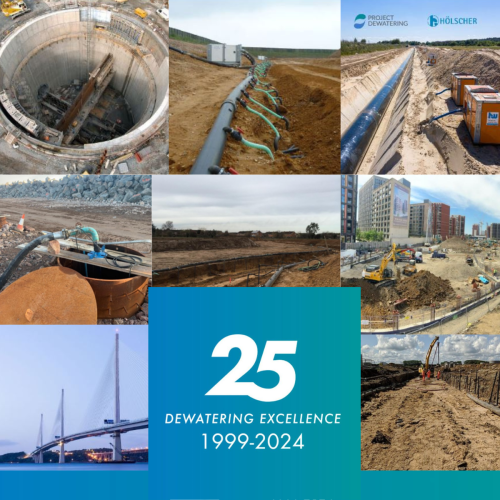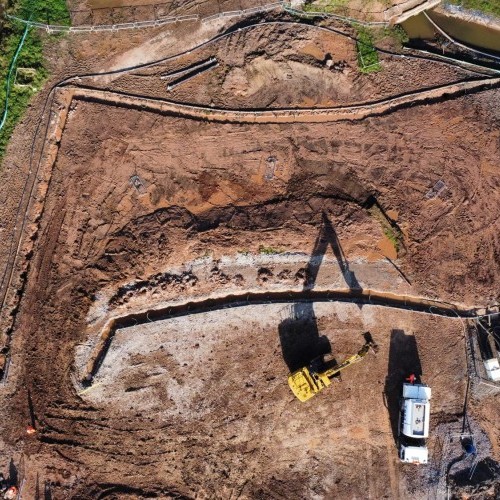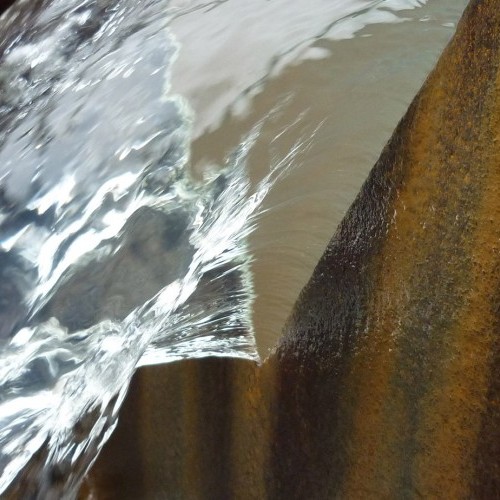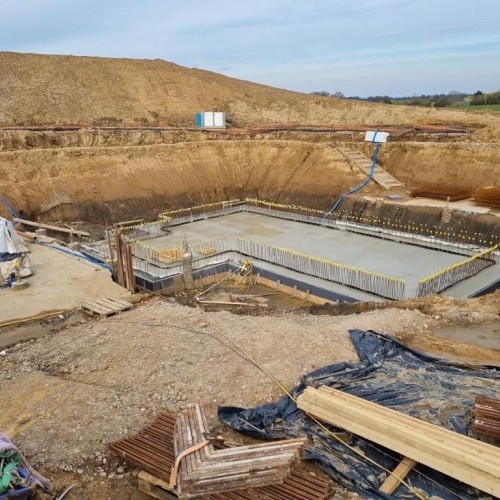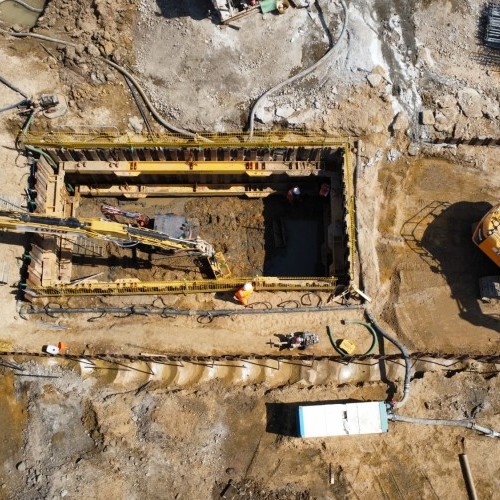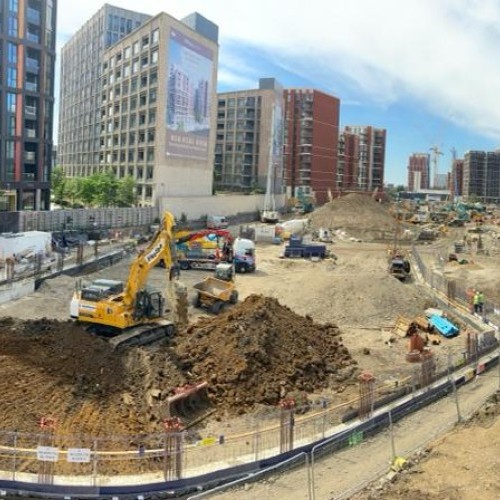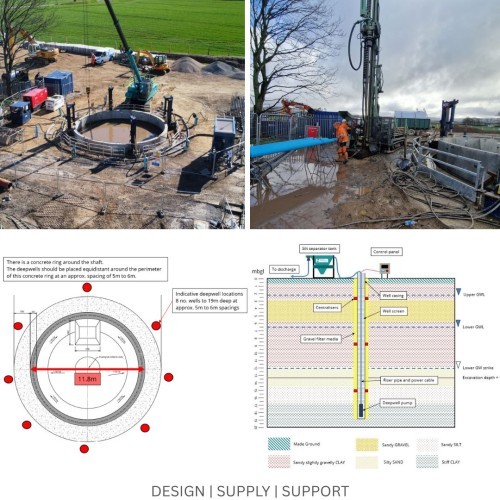PDL enabling dry excavations with deepwell and wellpoint dewatering
Reading dewatering
Overview
PDL supported the excavation of a 120 m perimeter attenuation tank to 3 m depth. Ground conditions comprised Alluvium over dense gravels extending to 6 m, underlain by Seaford Chalk. Standing groundwater was encountered at just 1 m below ground level, presenting a significant challenge for a dry and stable excavation.
Our approach
Drawing on prior project experience in the area, PDL had an in-depth understanding of the likely permeability values and the hydraulic connectivity between the chalk and gravels. This insight enabled us to design a robust and efficient dewatering solution tailored to the site conditions. We proposed a wellpoint dewatering system capable of delivering the necessary drawdown, reducing hydrostatic pressures below the excavation base, and handling the high anticipated flow rates with confidence. The wellpoints were to be installed internally to the sheet piles, to a depth of 5 m and at 1 m spacing.
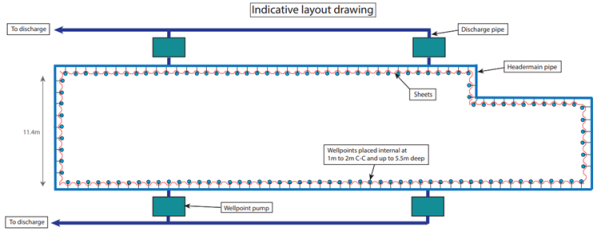
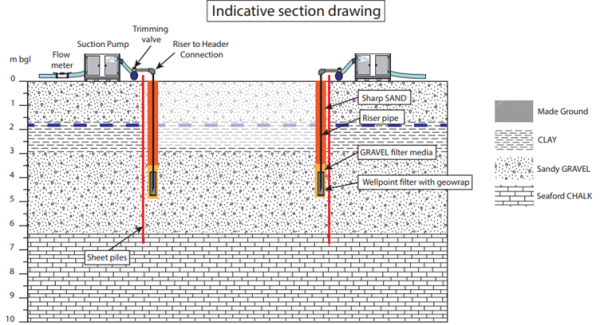
Outcome
PDL’s proactive design and technical expertise allowed the works to progress smoothly despite the challenging hydrogeological setting. Our experience and tailored approach delivered a reliable dewatering system that met the client’s requirements and supported safe, efficient excavation.

Bristol Shaft
Overview
The client approached PDL to provide a dewatering proposal to facilitate the excavation of a 6 m diameter shaft extending to a depth of up to 18 m. Site investigation recorded a sequence of sand and gravel over clay, underlain by sandstone. Groundwater was encountered between 6 m and 8 m below ground level, where sandy, clayey silt created significant challenges that prevented further progress without effective groundwater control.
Our Approach
PDL proposed the use of a deepwell dewatering system. Five deepwells were installed around the shaft perimeter using the cable tool percussion method, drilled to a maximum depth of 20 m or to the point of refusal. Each well was designed with a fine gravel filter pack and fitted with a 1 mm slotted well screen wrapped in geotextile. This specification minimised the ingress of fines during pumping and significantly reduced the risk of ground loss.
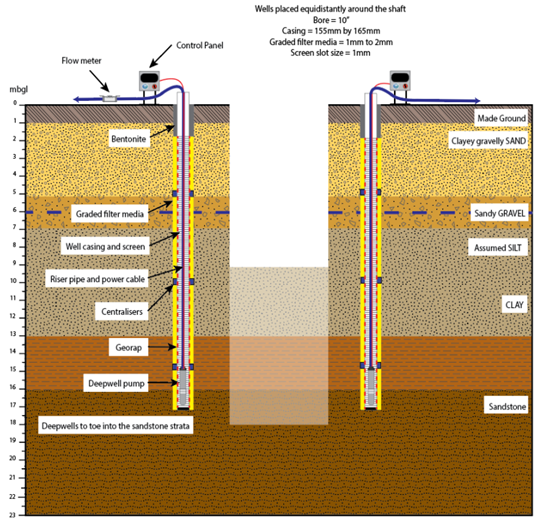
Outcome
The deepwell system operated effectively, achieving the required drawdown to the top of the clay and sandstone strata and meeting the dewatering objectives. However, the project was cancelled due to unsafe working conditions at the base of the shaft and is currently undergoing redesign.



